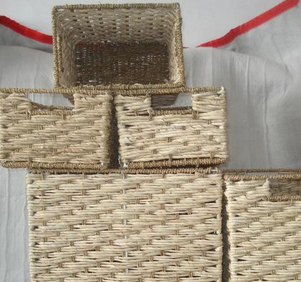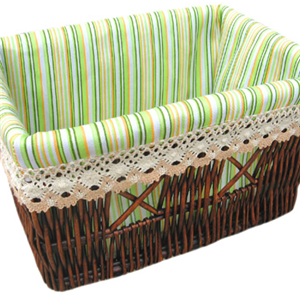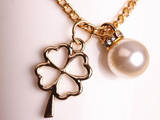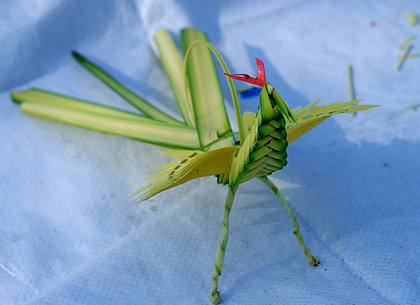Straw weaving - widely distributed
Straw weaving is widely distributed in China, with Shandong, Zhejiang, Guangdong, Henan and other major production areas. Farmers and artists make use of rich local resources such as corn husk, mat grass, straw and wheat straw. The daily necessities, such as hats, baskets, slippers, handbags, carpets, sleeping mats, etc., are woven in a wide variety of designs, good quality, simple and elegant style, and are popular at home and abroad. In addition, Sichuan's palm knitting and Zhejiang's linen knitting are also famous for their traditional characteristics of solid wear resistance, light weight and comfort.
Straw weaving - straw mat
Grass woven art products (straw mats) Jiangnan Su Seats, Yizheng Pu Seats and Zhejiang Ning Seats are also known as the "Three Famous Seats in China". In the history of Puxi Town, there is a saying that "three bays, nine wells and eighteen alleys, every household is busy weaving mats". The Puxi produced by Puxi Town has firm tendons, exquisite weavers, smooth surfaces, and uniform colors, and has a reputation of "standing upright, water tight, and good for twenty years". At present, a large straw mat trading center in East China, Zhonghua Puxi City, has been built locally.
Jiangsu Puxi, produced in Puxi Village, Yizheng, Jiangsu Province, is characterized by strict selection of grass, firm hemp tendons, elegant weaving, compact arrangement, smooth surface and durability. It is known as "standing still, water tight, and good for twenty years". The Suzhou Tiger Beard Mat was made by Kuai Cao near Suzhou Tiger Hill in the Qing Dynasty. Gu Lu's Record of Tongqiao Leaning on the Boat: "Kuai mats are better than those out of Tiger Hill. See Gusu Annals. There are only one or two shops in the mountain pond. There are two kinds of mats, Puxi mats and Mie mats. In the past, there were many Kuai mats among the residents around the mountain, which were called 'tiger bearded mats' in all directions. They are extremely exquisite, and they can't be found anywhere else. Today's Kuai mats are very popular in Huguan. However, there are also many people who use Kuai mats in the place of Tiger Hill. Hunan Linwu Longxu Grass Mat, Lutian Grass Mat, Qiyang Grass Mat and Hubei Mianyang Jiancao Mat (Blanket) are also famous.
Straw weaving - straw sandals
Straw sandals are made of straw, which is the product of rice culture. Straw sandals are easy to make. Just make the sole, and then use straw rope to twist the toe. After the heel is covered with the sole, use straw rope to cover the knot. These shoes are cheap and good in quality. They can be worn for daily work up and down the mountain. In the evening, if the soles are worn out, they will be abandoned. Therefore, they are also known as "don't hesitate" and "don't borrow". One pair a day, and they will be updated every day. It is said that straw sandals began in the Xia Dynasty, and were also worn by princes and nobles in the Spring and Autumn Period and the Warring States Period. Chuang Tzu, a great thinker, not only weaves by himself, but also wears worn straw sandals to meet the King of Wei. After the Eastern Han Dynasty, the nobles no longer wore straw sandals, and straw sandals became vulgar and were used exclusively by the lower people. A scholar in exile once wrote a straw sandal poem, which said, "Young people and old people come to yellow, and ten thousand knots are tied in pairs. Once they can tie the knot together, they are afraid that others will say that they are short and long. I am responsible for the rain and clouds, but unfortunately I cannot enter the orchid room. One day, my gut will break, and I will abandon my old love and leave the new side of the road." The straw sandal is a metaphor that makes people feel sad.
There are many kinds of straw sandals in the Yangtze River basin. Shoes made of cloth strips instead of grass are called "straw sandals", those made of hemp are called "linen sandals", and those made of kudzu vine are called "kudzu vine straw sandals". They are similar in shape and suitable for walking on steep rock walls, rugged mountain roads, mossy stone roads and muddy ridges. Ruo shell woven shoes in mountainous areas rich in bamboo are sharp and durable in rainy days, which are mostly used by mountain people. The shoes made of cattail grass are called "cattail shoes". They have boat shaped uppers, which are superior to straw shoes. Small businessmen and shop assistants wear them more often. At first, Hanzhou straw sandals in Sichuan were made of millet grass as the main raw material, several hemp ropes as warp and millet grass as weft. Later, in order to look beautiful, the nose of hemp rope was changed into colored silk thread, and the hemp rope used to bind shoes was changed into colored ribbons. It is said that the comfortable and light straw sandals were once favored by the Emperor Qianlong. In the old days, hundreds of straw sandals were sent to Gongsi every early summer. Since then, more women have woven straw sandals in Hanzhou, and the process has been improved. The magistrate of Hanzhou also set up a straw sandal market on the left opposite the Yamen Gate to facilitate officials to choose tribute shoes. A kind of straw boots, also called "Pu Shoes", produced in Nantong, is made of reed flowers twisted into flower ropes. It is a practical handicraft with good warm keeping effect. The Xitaidun Village in Wuzong Township of Nantong County is called "Maoboot Village". In the past, there were many ditches and branches, with strong cold soil and heavy alkaline gas. It is very suitable for the growth of reeds. As the main raw material of reed boots, reed flowers are readily available. Because the materials for making reed boots are easy to obtain, the technique is simple, and it can withstand cold and moisture, so it is easy to promote. All men, women and young people here can compile. Generally, the sole is made before early spring. When the summer flowers bloom, after picking them and drying them in the sun, they begin to embed reed rope into the soles of the boots, and along the blue printed cloth edge, a pair of thick, generous, and exquisite hand made Mao boots will be made. Mao boots are a famous sideline in the local area.
Straw weaving - other weaving
Shanghai Jiading straw weaving is famous for making daily handicrafts. Jiading straw weaving takes yellow grass as raw material. Cyperaceae, monocotyledonous plants of the genus Pseudostellaria, primary
There is a saying that "the famous city produces many yellow grasses" by the beach river near Dongchengqiao Town, Jiading. The stem of yellow grass is smooth and flexible. Since the Ming Dynasty, local residents have woven cattail shoes with it. At the time of Guangxu, the yellow grass system was very developed. In modern times, yellow grass has developed into artificial cultivation. Knitting varieties include hats, bags, bags, blankets, etc. The design and color are simple and beautiful, cheap and beautiful, light and durable. Zhejiang Cixi Changhe, Taizhou, Wenzhou, Huangyan and other places are also rich in straw weaving technology, weaving varieties include daily necessities and various toys.
The straw weaving in the Yellow River basin is represented by Shandong and Henan, among which Shandong is particularly prosperous.
According to the pottery unearthed from the Dawenkou Cultural Site in Tai'an City in 1959, the folk straw weaving in Shandong had existed 6000 years ago. According to different materials, folk straw weaving techniques can be divided into wheat straw weaving, corn husk weaving, cattail grass weaving, Langya grass weaving, horse mixed grass weaving, three edged grass weaving, straw weaving, hemp weaving, and mountain arrow grass (also known as "oil grass" in the folk) weaving. Among them, wheat straw, corn husk and cattail grass are common. According to the use of woven fabrics, there are baskets, baskets, boxes, plates, boxes, tea mats, cushions, chopsticks cages, rice bags, strainers, vegetable screens, pot covers, fans, flowerpot covers, paper baskets, plugs, tea cup covers, grass toys, etc; There are straw hats (hats, children's hats, hats, sun hats, hemp hats, etc.), straw shoes (there are traditional "Puwo" for winter wear, as well as various slippers and sandals), coir raincoats, corn skin jackets, etc., and straw screens, etc; There are grass carpets, umbrellas, wall decorative paper, grass wallpaper and so on in architecture and interior decoration. In addition, there are all kinds of straw braids as semi-finished products. According to the classification of process, there are various kinds of goods, such as goods weaving, goods masonry, goods matching, and goods nailing. As a kind of traditional arts and crafts and farm handicraft products, straw weaving can be found all over Shandong Province, and is concentrated in Taiwan, Weifang, Binzhou, Liaocheng, Qingdao and Jinan.
Shahe Town, Ye County, Taishi City is the early distributing center of straw weaving in China, and is still an active place of straw weaving production. The straw braids, straw mats, straw hats and straw boxes made of wheat straw here still have traditional characteristics. Grass braids, such as "Shahe yellow", "Shahe white" and thousands of "pattern braids", are well known at home and abroad for their fine workmanship and workmanship. However, in recent years, the main straw weaving products in Taiwan have changed from wheat straw weaving to corn husk weaving, the corn husk carpets in Haiyang, Rushan and other cities, the "Ma Lian Duo" basket in Haiyang, the winding basket in Longkou, and the corn husk curtain in Zhaoyuan are all characteristic hot selling products. Changyi County, Weifang City, is famous for hand woven straw hats. The local golden straw hats are known as valuable. Up to now, most rural women in the county can weave straw hats in various forms by hand.
Tancheng County in Linyi is a famous producing area of Langya grass weaving. Langya Grass, also known as Yellow Grass, is called "Langya Grass" because its main production area, Tancheng County, was Langya County in the Qin Dynasty. The leaves of Langya Grass are long, thin, soft and elastic, which are suitable for weaving. Local people have used them to weave straw sandals for generations. In 1913, the local Yang Xitang and others created a straw hat weaving process with Abutilon as the warp and Langya grass as the weft according to the folk weaving method, thus making Langya grass woven straw hat famous all over the world. Langya grass weaving has a variety of techniques: "eye weaving" has a harmonious rhythm, "eagle claw pattern" is lively and dynamic, "rope grass weaving" has an open style, and the combination of several weaving methods has the effect of virtual reality, density, light and shade. Besides straw hats, Langya grass products also include slippers, baskets, tea cup covers, fruit boxes, flower boxes, etc. Pingdu is also a traditional area of straw weaving production in Shandong Province. The products are featured by straw braids and straw tea mats.
Boxing County in Binzhou has its own unique way of weaving cattail tea mats, cushions, etc. with twisted knitting technology. In recent years, various straw wall mats have been made with reeds and cattails, making traditional straw woven into the interior building materials of modern buildings.
Shandong straw weaving has a wide range of techniques, such as braiding, flat weaving, twisting weaving, and flower weaving (such as "Matlin Duo", "sleeve clasp", "chain clasp", "small spray", "cross clasp", "curve clasp", "zongzi clasp", "plum clasp", etc.), cone masonry, string connection, string nail, string connection, twining clasp, twining saw, twining edge, twining painting, wrapping, twining, folding Sewing, embroidering, pasting and cutting flowers.
With the improvement of modern science and technology, all kinds of mechanical products and synthetic material products are flooded in all fields of human life, which not only challenges straw weaving handicrafts, but also faces a major opportunity for development, because on the one hand, mechanical products and synthetic material products replace straw products in some fields; On the other hand, some people with developed industries are generally tired of mechanical products. They are more and more interested in handicrafts using natural materials. Some put forward the slogan of "going back to nature", which doubled the value of straw weaving handicrafts and increasingly involved more aspects of people's lives. Shandong straw weaving, a handicraft rich in profound history and folk tradition, will become a modern folk handicraft rich in era style in the hands of creative Shandong people, and will weave happiness, harmony and satisfaction for the modern life of all mankind.





